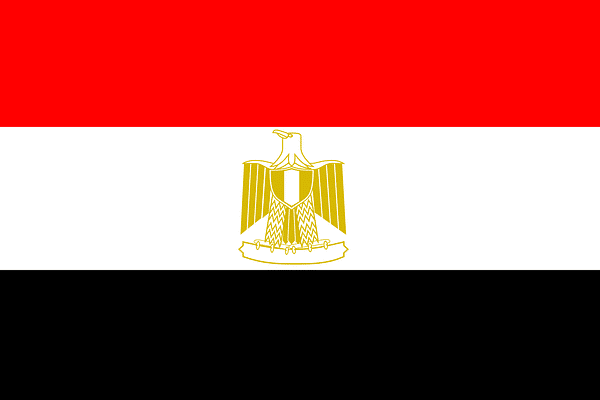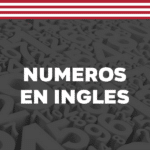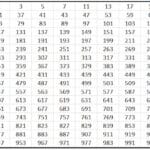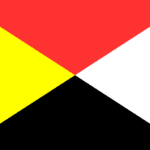The numerary world of the Empire of Egypt is fascinating. Today we can read and write the numbers as they did. Do you want to learn to write them too? Keep reading and you will get all the keys.
The first thing we must do is a distinction between the representation of numbers in hieroglyphs on the one hand, which were used for their engraving in stone and which are what we are going to learn to write, and on the other hand the representation in hieratic, which it was very different and was the one used to write daily on the famous papyri.
Even today one could find some ancient document that demonstrated even greater mathematical knowledge, but his eagerness to study from a theoretical approach to mathematics is worthy of admiration.
Despite the fact that the authors to magnify their own culture in their narrative, the great Greek authors cited the Egyptians as teachers in many mathematical disciplines such as geometry or arithmetic.
The Egyptians used these numbers since the Middle Kingdom of Egypt, although it was really little used when writing day to day on papyri. Since this time the hieratic was already used, a writing system that allowed scribes to write down much faster.
However, when it came to carving in stone these cryptograms were used.
We know the language of hieroglyphics thanks to an expedition, commanded by Napoleon Bonaparte, in 1799. Such an expedition discovered a large granite slab in Rosetta, Egypt, which England would take over three years later and which today is in the British Museum in London .
That stone has texts in 3 different languages: hieroglyphics, Egyptian demotic, and ancient Greek; known as the Rosetta Stone.
In 1822, Jean François Champollion, began to decipher it and the following year Thomas Young also contributed to that work. In later years many other authors have joined the cause, thus deciphering the language of hieroglyphics for all mankind.
Definitely, the most important for mathematics has been Henrich Brugsch, since in 1849 he published "Numerorum apud Veteres Aegyptios", the first treatise studying Egyptian mathematics in Contemporary History ".
How to Read Egyptian Numbers: Symbols and Value
These hieroglyphic signs were used to represent the different powers of ten:
- Walking stick. Represents the units:
- Asa. Represent the tens:
- Coiled rope. Represent the hundreds:
- lotus flower. Represents units of a thousand:
- Finger. Represents tens of thousands:
- Frog (or tadpole). Represents hundreds of thousands:
(
)
- Heh (god of infinity and eternity). Represents one million or infinity:
To understand it well, we have prepared an image with a list of Egyptian numbers from 1 to 100, and even more:
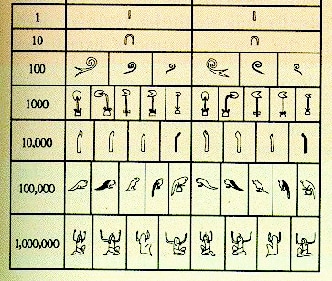
So if the number to represent is 1.322, we would write
Or we could also write:as it can be written in any order.
You should know that the 0 did not exist (until the XIII dynasty, in Middle Egypt) and then the hieratic symbol "nfr" began to be used on papyrus and in hieroglyphic representation. Although this came to mean the empty space that exists before 1 (and that later would become the limit between positive and negative numbers). But it was not considered to fill a digit as we use it in our Arabic script, as this writing system would come much later.
Rules for converting Egyptian numbers to Arabic (our numbers)
The numeral hieroglyphs can be read and translated into our Arabic numerals simply by inverting the above formula. If we see a number inscribed on a stone from Ancient Egypt, for examplewe can deduce that it is 45.003.
- It can be written both from left to right and vice versa, and vertically (top to bottom) as well.
- Use as many symbols as you need (from 1 to 9) to represent the desired number.
- Group them in blocks where many of the same symbols are repeated:
.
- If you were an Egyptian scribe you should make sure to use these only when engraving in stone, to write the papyri better use the hieratic symbols of the Egyptian demotic.
- Egyptian numbers could be represented with numbers or also
- To form ordinals: for the first they had a unique symbol:
. From the second to the ninth you just have to add a jug to the number, for example:
. And from the tenth onwards they are formed by adding one called "fill" and that has this form:
Egyptian mathematics
The Egyptians already knew mathematics to a certain level, taking into account that we do not have evidence until Middle Egypt that they knew the number 0. The oldest Egyptian text that we know demonstrating the Egyptian use of mathematics is the Moscow Papyrus, which dates back to from that time to the years 2000-1800 BC
But remember that for this they used other characters than those used in hieroglyphics that we saw above. The Egyptians in their documents wrote (not only numbers but all other characters) in their language, Egyptian demotic, which was written in hieratic.
With this system, the Egyptians wrote much faster, as they needed many fewer characters to represent the same number.
It is probably from much earlier, but we know exactly that as early as 1650 BC they knew about addition and subtraction, multiplication and division, arithmetic and geometry series, unit fractions, compound and prime numbers, arithmetic, geometric and harmonic means, and how to solve first order linear equations. And also that from 1300 a. C. could solve second order algebraic equations (quadratic).
Impressive right? Just think of the great pyramids: Did you know that they are famous for their mathematical accuracy? They are another proof of the sophistication of Egyptian mathematics applied, in this case, to construction.
Regarding fractions in hieroglyphs we know , a figure in the form of an open mouth. As if idealizing a number that "eats" itself metaphorically.
It symbolizes one match by the number that you put next to it. In addition to representing unit fractions, that is, the fraction one between any number, they also had two thirds (2/3) and three fourths (3/4).
Adding these unit fractions to a few feet in an engraving we have two possible situations: the feet "walk" in the direction of the writing or the feet go against it. If they go to the side in which it is being expressed, they mean addition. If, on the other hand, the feet walk in the opposite direction, it means subtraction.
